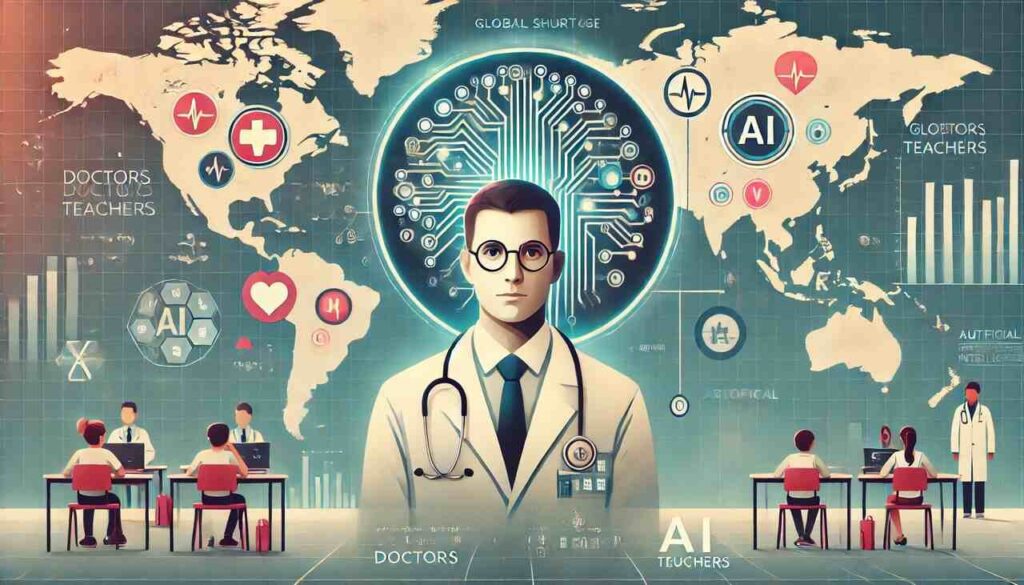Bill Gates highlighted Skilled Trades and K–12 Education as two professions where Artificial Intelligence can help resolve persistent labor shortages. These sectors face growing demand with limited human resources, and AI-driven tools offer scalable support to enhance productivity, fill knowledge gaps, and reduce burnout.
How Can AI Address Workforce Challenges in Skilled Trades?
AI-Powered Diagnostics support technicians and mechanics by analyzing sensor data, performing predictive maintenance, and offering repair instructions through augmented reality overlays or mobile AI assistants. This reduces reliance on senior-level technicians for routine tasks.
Training Simulations via VR and AI offer immersive environments for electricians, plumbers, and HVAC technicians to practice complex scenarios without risk. AI adapts these modules based on user performance, accelerating skill acquisition in vocational training programs.
On-the-Job Guidance Tools such as wearable AI headsets or mobile AR apps provide real-time instructions during physical tasks. New apprentices can perform at higher levels with minimal supervision, offsetting the lack of experienced mentors.
Work Scheduling Automation powered by AI algorithms optimizes job dispatching, material management, and labor allocation. This increases service efficiency and reduces burnout among a limited workforce.
Digital Twins and Modeling enable virtual testing of complex systems before implementation, enhancing design accuracy in trades like construction, plumbing, and electrical planning, where precision labor is often scarce.
In What Ways Can AI Support K–12 Educators Facing Staff Shortages?
AI Teaching Assistants help automate lesson planning, grading, and student progress tracking. Teachers spend less time on administrative tasks and more on direct student engagement.
Personalized Learning Algorithms adapt instructional content to student performance. AI-driven platforms identify struggling students early and suggest tailored interventions, supporting overburdened educators in large classrooms.
Speech and Language AI Tools enhance accessibility by translating lessons, generating closed captions, or helping students with learning disabilities, addressing inclusivity where human specialists are in short supply.
Teacher Training and Support Chatbots provide on-demand help with pedagogy, technology use, or curriculum design, particularly useful in districts with limited professional development resources.
Classroom Behavior Monitoring uses AI vision and sound analysis to detect disruptions, allowing teachers to focus on instruction while maintaining classroom management—a key concern in understaffed schools.
Why Did Bill Gates Emphasize These Specific Professions?
Demographic Imbalance in the skilled trades shows an aging workforce with fewer young entrants, making automation and AI-assisted labor a necessary bridge to sustain productivity.
Teacher Attrition Rates continue to rise due to low pay, high stress, and under-resourcing, making AI a practical solution for workload management and student support at scale.
Economic Resilience through AI is a recurring theme in Gates’ philanthropic and investment focus. By automating support roles in these essential sectors, communities can maintain functionality despite labor gaps.
Long-Term Societal Impact is more measurable when AI investments are directed at foundational systems like education and infrastructure, which influence economic growth, equity, and innovation.
AI Ethics in Labor Augmentation forms part of Gates’ broader narrative on responsible AI deployment. Enhancing, not replacing, human jobs aligns with his vision of AI as a human empowerment tool.
What Are the Broader Implications of AI in Solving Worker Shortages?
Labor Force Rebalancing becomes feasible when AI absorbs routine tasks, freeing skilled humans to focus on higher-order responsibilities in both physical and cognitive domains.
AI-Driven Economic Mobility emerges by enabling more people to access training, tools, and flexible job structures, particularly in underserved or rural regions.
Workplace Transformation through AI integration introduces new hybrid roles—such as AI-assisted instructors or technician-analysts—reshaping labor identity and career pathways.
Education and Trade Synergy can grow when AI tools bridge vocational skills into curriculum design, empowering a new generation to meet demand through digitally-enhanced learning.
Policy and Infrastructure Adaptation will be critical. Legislators must update standards and funding models to accommodate AI tools in both classrooms and field jobs, ensuring ethical, equitable deployment.
For more exciting news articles you can visit our blog royalsprinter.com

